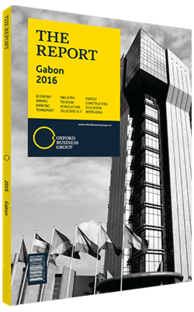Tsuyoshi Kamihira, CEO, Portek Group: Interview

Interview: Tsuyoshi Kamihira
How has shipping activity in Africa developed over the past five years?
TSUYOSHI KAMIHIRA: In the years prior to 2014, we have observed steady volume growth, fuelled primarily by strong oil and commodity prices. Despite a slowdown, especially in 2015, Africa still offers opportunities, given that its economies have started on a low-growth basis, and investment in the port sector has remained insufficient to meet the ever-changing environment. This has been fuelled by the cascading effects of the drop in commodity prices. Increasingly, bigger and preferably non-geared vessels are deployed towards the African region, requiring better productivity at ports and thus specialised container handling equipment. Despite seeing new ports being developed to meet such needs in recent years – especially in West Africa, namely Tema, Abidjan and Kribi – capacity is still insufficient to meet demand, and many existing port facilities across the continent still require upgrading to meet new requirements.
Which types of structural reforms might help bring port rates down?
KAMIHIRA: Smooth execution of Customs procedures is an important consideration. A shortening in the time taken to manage the process and bring cargo to the customers substantially reduces unnecessary port and demurrage (discharge delay) charges, and enables a more efficient turnaround of port facilities. Another possibility would be to consider rail as a potentially important mode of transport for cargo in the region. In this regard, and in addition to the vital investment in rail infrastructure, it is also important for governments to standardise the rail gauge. This will ensure smoother cargo movement to land-locked countries in Central Africa and thus contribute to a reduction in the overall cost for operators and consumers.
What are the biggest challenges faced by African ports – and particularly smaller ports?
KAMIHIRA: The biggest challenges for smaller ports are bureaucracy and over-ambitious goals. Governments need to understand that smaller ports in Africa should be developed with an eye to sustainable growth and on a long-term basis. Therefore, these projects should be planned and developed according to actual demand and with a phased approach, rather than through unnecessarily large investments. This over-investment in infrastructure might indirectly increase the cost to consumers and inhibit growth, instead of contributing to the development of the nation.
What can be done to incentivise private sector participation in port activity in Africa?
KAMIHIRA: It is important for the government to display goodwill in upholding legal and contractual obligations on concessions, placing the real need for a strong legal and practical framework at the forefront of negotiations. Investors want to be assured that their investment and roles in the conduct of business cannot be easily compromised or eroded due to unexpected changes in rules and regulations. Moreover, the government can assist investors in the resolution of land leasing or possession agreements, or provide financial incentives such as tax breaks on re-invested earnings. This could potentially contribute to a faster and mutually beneficial development of their infrastructure, and ease the burden on foreign investors.
Generally speaking, the implementation of an agreed-upon deal may vary depending on the environment at that time. The non-fulfilment of pledges is often due to a lack of knowledge, expertise, resources or time by the relevant local authorities. They must realise that business plans are built around the rights and obligations of the parties.
You have reached the limit of premium articles you can view for free.
Choose from the options below to purchase print or digital editions of our Reports. You can also purchase a website subscription giving you unlimited access to all of our Reports online for 12 months.
If you have already purchased this Report or have a website subscription, please login to continue.

